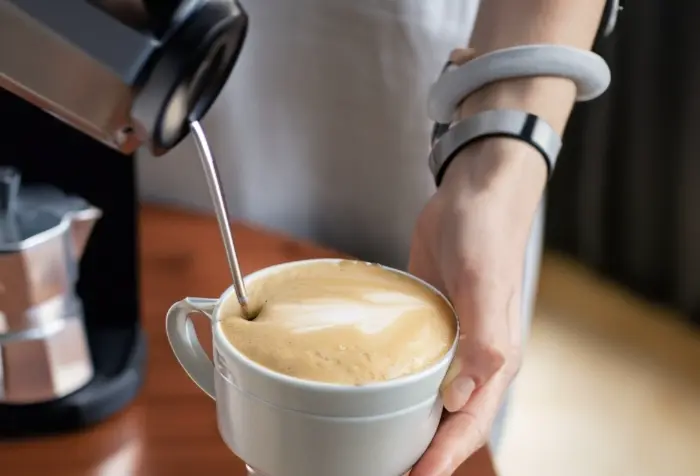Espresso is a concentrated coffee beverage brewed by forcing hot water through finely-ground coffee under high pressure. One of the most critical factors in making a perfect shot is the amount of water used. Too little water results in an overly strong, bitter shot, while too much dilutes the flavors. This article explores the ideal water quantity for espresso, considering different brewing methods, machine types, and personal preferences.
Understanding the Basics of Espresso Extraction
Espresso extraction relies on a precise balance between water, coffee grounds, pressure, and time. The standard espresso shot uses about 18 to 20 grams of coffee and yields 30 to 40 milliliters of liquid. The ratio of coffee to water determines the strength and flavor profile.
The Specialty Coffee Association (SCA) recommends a brewing ratio of 1:2 for a balanced espresso. This means for every gram of coffee, you use two grams of water. For example, 18 grams of coffee would require 36 grams (or milliliters) of water. However, this can vary based on roast level, bean origin, and desired taste.
Factors Influencing Water Volume in Espresso
Several factors affect how much water should be used when pulling an espresso shot. Understanding these variables helps in adjusting the brew for optimal results.
Coffee Dose and Yield
The coffee dose refers to the amount of ground coffee used, typically measured in grams. The yield is the final liquid espresso produced. A common starting point is a 1:2 ratio, but some prefer ristretto (1:1) or lungo (1:3) shots.
Ristretto: Uses less water (1:1 ratio), producing a sweeter, more concentrated shot.
Normale: The standard (1:2 ratio), balancing acidity and body.
Lungo: Uses more water (1:3 or higher), resulting in a lighter, more extended extraction.
Grind Size and Extraction Time
Finer grinds slow water flow, increasing contact time and extraction. Coarser grinds allow water to pass quickly, reducing extraction. The ideal extraction time is 25 to 30 seconds. If the shot runs too fast, the grind may be too coarse; if too slow, it may be too fine. Adjusting water volume alongside grind size ensures proper extraction.
Machine Pressure and Temperature
Espresso machines operate at 9 bars of pressure, though some allow adjustments. Higher pressure can force more water through the coffee, affecting yield. Temperature also plays a role—water between 195°F and 205°F (90°C–96°C) extracts flavors optimally. Inconsistent temperature or pressure may require compensating with water volume.
Roast Profile and Bean Freshness
Darker roasts extract faster due to their porous structure, often needing slightly less water. Lighter roasts are denser and may require a longer extraction with more water. Fresh beans (1–3 weeks post-roast) release gases that influence extraction, while stale beans may need adjustments in water volume to avoid flat flavors.
Measuring Water for Espresso
Precision is key in espresso preparation. Using scales to measure both coffee and water ensures consistency.
Weight vs. Volume
Measuring by weight (grams) is more accurate than volume (milliliters) because crema (the foam on top) can distort volume readings. A digital scale with 0.1-gram precision is ideal.
Pre-Infusion and Water Distribution
Some machines offer pre-infusion, where a small amount of water wets the grounds before full pressure is applied. This step ensures even extraction and can influence the total water needed. Without pre-infusion, channeling (uneven water flow) may occur, requiring adjustments in water volume.
Adjusting Water for Different Espresso Styles
Different espresso-based drinks require variations in water volume.
Single vs. Double Shots
Single Shot: Uses 7–9 grams of coffee and yields 15–20 grams of espresso.
Double Shot: Uses 14–20 grams of coffee and yields 28–40 grams of espresso.
Most modern espresso machines are designed for double shots, as single shots can be inconsistent due to smaller basket sizes.
Americano vs. Long Black
Both drinks dilute espresso with water but differ in preparation:
Americano: Espresso is pulled first, then hot water is added.
Long Black: Hot water is poured first, then espresso is added to preserve crema.
The amount of added water varies, but a common ratio is 1:2 (espresso to water).
Troubleshooting Water-Related Espresso Issues
Even with precise measurements, issues can arise. Here’s how to fix them.
Sour or Under-Extracted Espresso
If the shot tastes sour, it may need more water to extend extraction. Increasing the yield (e.g., from 1:2 to 1:2.5) can balance acidity.
Bitter or Over-Extracted Espresso
A bitter taste suggests too much water or too long an extraction. Reducing the yield (e.g., from 1:2 to 1:1.5) can help.
Weak or Watery Espresso
This usually means too much water was used. Lowering the yield or adjusting the grind finer can intensify the flavor.
Advanced Techniques for Water Control
Experienced baristas use advanced methods to refine their espresso.
Manual Flow Profiling
Some machines allow manual control over water flow rate. Slower flow can enhance sweetness, while faster flow may highlight brightness.
Pressure Profiling
Adjusting pressure during extraction (starting low, then increasing) can optimize flavor. This technique often requires experimenting with water volume at different stages.
Conclusion
The right amount of water for espresso depends on multiple factors, including dose, grind, machine settings, and personal taste. Starting with a 1:2 coffee-to-water ratio and adjusting based on flavor is a reliable approach. Precision tools like scales and timers help maintain consistency, while experimenting with different styles (ristretto, lungo) allows for customization. Mastering water volume in espresso leads to better extractions and a more enjoyable coffee experience.
By understanding these principles, both home brewers and professional baristas can craft espresso shots that highlight the best qualities of their coffee. Whether you prefer a concentrated ristretto or a mellow lungo, controlling water quantity is essential for achieving the perfect cup.
Related topics:
What is the Best Espresso Powder for Baking?
How to Use Mr Coffee Espresso?


